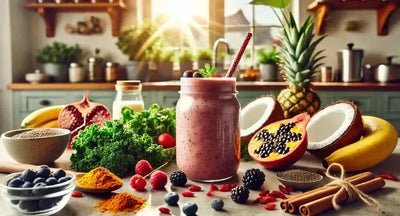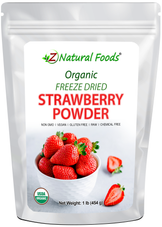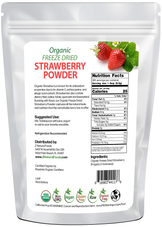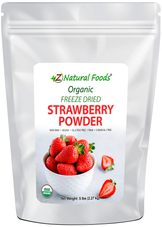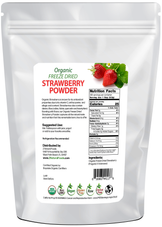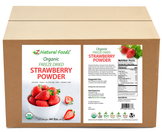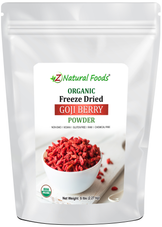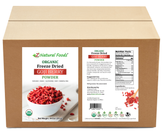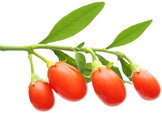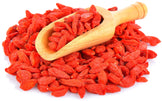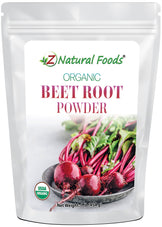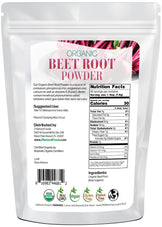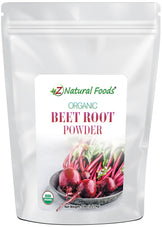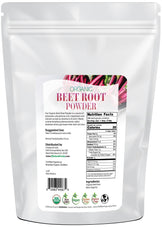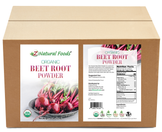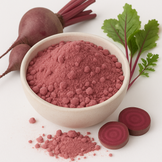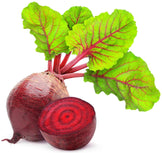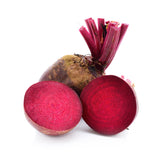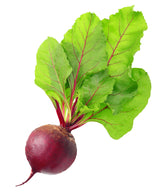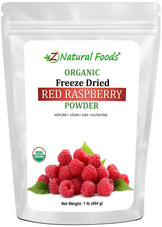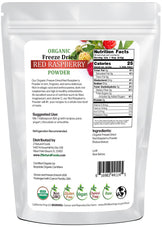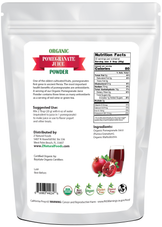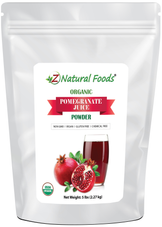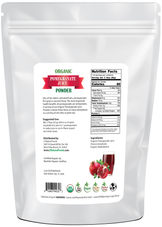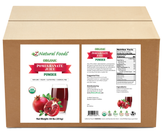Description
Description
Red superfoods are foods with very high nutritional density. Consisting of fruits and vegetables, red superfoods are predominantly red, including cranberries, tomatoes and pomegranates.
Red superfoods are very high in healthy vitamins, minerals and antioxidants. Red superfoods include nutritional superstars such as strawberries, beet roots, red raspberries, tart cherries and goji berry. These foods are high in nutrition and contain healthy phytonutrients.
The CDC guidelines recommend that an adult eat at least 1.5-2 cups of fruits and 2-3 cups of vegetables each day.
And by making a healthy portion of these requirements from red superfoods, you can get delicious, rich flavors, a fantastic aroma, and unique, healthy phytonutrients that red foods contain.
This article highlights some of the scientific studies showing the benefits of red superfoods.
8 Benefits of Drinking Reds
Red superfoods contain large amounts of antioxidants that may reduce the risk of some diseases. Red superfoods and the antioxidants within are important in your diet and may improve long-term health and wellness.
Drinking red superfoods is a convenient way to boost energy levels, support healthy weight management, and get antioxidants into your diet. The highest quality red superfoods have retained maximum nutrition with minimal processing and preservatives so you have peace of mind knowing you aren’t ingesting harmful chemicals.
Drinking your reds is an easy, tasty way to ensure you are getting the nutrition from your favorite red foods. The highest quality growers and the best manufacturers strive to focus on minimal processing, and promoting natural methods in order to retain the nutrition and deliver quality red foods in a powder form. This means you can enjoy a super reds powder supplement any time of year.
For instance, Organic Essential Red is a combination of ten of the most nutritious red fruits in the world, such as:
The nutritious red foods in Essential Reds are scientifically proven to benefit your health in many ways:
1. Rich in antioxidants
Red superfoods contain high amounts of antioxidants, protective substances that fight free radicals. Your body produces these free radical compounds after breaking down food or after exposure to harmful pollutants such as radiation or tobacco smoke.
Once the free radicals outnumber the antioxidants, it forms a state known as oxidative stress, the perfect condition for developing harmful conditions such as heart diseases, cancer, and type 2 diabetes. For example, berries contain antioxidants that neutralize the free radicals and prevent damage to cells.
2. May support eyesight
Most red superfoods have several vitamins, beta carotenoids, and minerals that may support eye health. They may also protect the vision of humans of all ages.
3. High in fiber
Fiber is important in the human body for optimal health and constipation management. Red superfoods contain an optimal amount of soluble fibers that aid in burning fat, regulating sugar levels, and making you feel full for long.
4. Loaded with micronutrients
The human body needs micronutrients for proper functioning. For example, some micronutrients in red superfoods include vitamins, minerals, folic acid, potassium, beta-carotene, and calcium.
Red superfoods, such as beetroots, are rich in micronutrients. The fat-soluble vitamins A, D, E, and K play vital roles in the body, such as:
- Build strong bones
- Promote healthy vision
- Protect the body against diseases
- Facilitate absorption
Many minerals are in red superfoods, and this is how they may help your body:
- Iron makes hemoglobin and carries oxygen to all parts.
- Calcium and potassium improves bone health.
- Sodium chloride maintains the water balance in your body.
5. Rich in phytonutrients
Phytonutrients are naturally occurring chemicals in plants and are in red superfoods. Examples of phytonutrients include resveratrol and anthocyanin found in strawberries. These nutrients may have great value to the human body, as they may help:
- Improve the immune system
- Regulate hormones
- Provide added protection against some diseases
6. Anti-inflammatory properties
Chronic inflammation may be the cause of many diseases such as type 2 diabetes, heart disease, and cancer. Punicalagins in pomegranate have high anti-inflammatory properties, while the beta-carotene content in most red supers also have high inflammatory properties. For example, this pomegranate juice powder may have anti- inflammatory properties and may prevent the occurrence of some diseases.
7. May support heart health
Heart attack is a major cause of premature death. The punicic acid in pomegranate may support a healthy heart. It may also reduce high blood pressure, while the high levels of flavonoids in berries may support a healthy heart.
Beetroots contain a high amount of nitrates that may improve blood flow and lower blood pressure.
8. Aids weight loss
Obesity and being overweight are major risks of cardiovascular disease. Essential reds may support a healthy blood sugar response, keep you full longer and may aid weight reduction and weight management.
How Many Times a Day can you Drink Reds?
Diseases such as heart disease and Type 2 diabetes affect a growing portion of the American population. Organic Essential Reds can play an important role in your immunity, health, and wellness.
Drinking red superfoods is an easy way to get a lot of nutrition into your diet. One serving of Essential Reds is two tablespoons of the organic red powder which improves flavor, taste, and nutritional value.
Most people add 1 serving into their daily smoothie, or mix 2 tablespoons in greek yogurt, mixed in water, juice or into their favorite recipe. While each serving only contains 70 calories, one serving per day is suggested because of the high nutrition value.
For Bulk inquiries and custom formulations click here: https://www.znaturalfoods.com/pages/bulk
References
Centers for Disease Control and Prevention. "National diabetes statistics report, 2020." Atlanta, GA: Centers for Disease Control and Prevention, US Department of Health and Human Services (2020): 12-15. https://www.cdc.gov/diabetes/data/statistics-report/index.html
Burton-Freeman, Britt M., Amandeep K. Sandhu, and Indika Edirisinghe. "Red raspberries and their bioactive polyphenols: cardiometabolic and neuronal health links." Advances in Nutrition 7, no. 1 (2016): 44-65. https://www.ncbi.nlm.nih.gov/pmc/articles/PMC4717884/
Pahwa, Roma, Amandeep Goyal, Pankaj Bansal, and Ishwarlal Jialal. "Chronic inflammation." (2018). https://www.ncbi.nlm.nih.gov/books/NBK493173/.
Centers for Disease Control and Prevention. 2017. CDC Newsroom. [online] Available at: https://www.cdc.gov/media/releases/2017/p1116-fruit-vegetable-consumption.html. [Accessed 1 November 2021].
Harvard Health. 2013. Eat blueberries and strawberries three times per week - Harvard Health. [online] Available at: https://www.health.harvard.edu/heart-health/eat-blueberries-and-strawberries-three-times-per-week. [Accessed 1 November 2021].
Harvard Health. 2019. Understanding antioxidants - Harvard Health. [online] Available at: https://www.health.harvard.edu/staying-healthy/understanding-antioxidants. [Accessed 1 November 2021].
New York State. 2016. Look to Fruits and Vegetables for Good Eye Health. [online] Available at: https://www.health.ny.gov/publications/0911/. [Accessed 1 November 2021].
